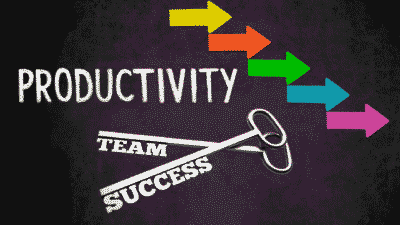What if the biggest drain on your company’s resources isn’t market fluctuations or operational costs, but the quiet friction within your teams? A staggering 86% of employees and executives point to a lack of collaboration or ineffective communication as the reason for workplace failures. This isn’t just about missed deadlines; it’s about a fundamental breakdown in the human dynamics that drive success. Many leaders sense this underlying issue but struggle to pinpoint the cause. They see the symptoms—low morale, stagnant projects, and financial strain—but the root cause remains elusive. This article will shift your perspective from observing problems to identifying their source, using Patrick Lencioni’s powerful framework to diagnose the five critical dysfunctions of a team that could be silently eroding your organization’s potential. By understanding these dysfunctions, you can move from reacting to problems to proactively building a cohesive, high-performing team.
1. The Foundational Flaw: Absence of Trust
The first and most fundamental of the dysfunctions of a team is an absence of trust. This isn’t about predicting a colleague’s actions; it’s about creating an environment of psychological safety where team members feel secure enough to be vulnerable. When trust is absent, individuals hide their weaknesses, hesitate to ask for help, and avoid admitting mistakes. This creates a culture of superficial harmony where no one is willing to be open and honest, ultimately hindering genuine collaboration.
How to Build a Foundation of Trust
Building trust requires intentional effort from the leader and the entire team. The leader must model vulnerability first, openly admitting their own mistakes and limitations.This sets the tone for others to do the same.
Practical Steps:
- Personal Histories Exercise: Encourage team members to share personal, non-work-related information, such as hobbies, hometowns, or personal challenges they’ve overcome. This simple activity helps build empathy and understanding among colleagues.
- Structured Sharing: Activities like “Two Truths and a Lie” can be an engaging way for team members to share personal anecdotes and build rapport.
- Behavioral Profiling: Using tools to understand different personality and communication styles can foster greater appreciation for individual differences and improve interaction.
- Leader-Led Vulnerability: A leader who openly says, “I’m not sure about this, what are your thoughts?” or “I made a mistake on that report,” creates a safe space for others to be equally transparent.
Visual Element Idea: A simple infographic showing a pyramid, with “Absence of Trust” as the wide base, visually representing it as the foundation for all other dysfunctions. Each subsequent dysfunction would be a layer built on top of the one below.
2. The Illusion of Peace: Fear of Conflict
Where trust is absent, a fear of conflict inevitably follows. This isn’t about avoiding personal attacks, but rather the suppression of healthy, ideological debate. Teams that fear conflict resort to veiled discussions and guarded comments, leading to what Lencioni calls “artificial harmony.” Important decisions are made without robust debate, leading to suboptimal outcomes and simmering resentments that often surface in unproductive ways.
How to Encourage Healthy Debate
A leader’s role is to demonstrate that constructive conflict is not only welcome but necessary for the team’s success. This involves creating a safe environment where differing opinions can be expressed without fear of reprisal.
Practical Steps:
- Acknowledge the Positive Role of Conflict: Explicitly state that healthy debate is expected and valued. Frame it as a collective search for the best possible answer, not a personal competition.
- Mine for Disagreement: During meetings, actively seek out dissenting opinions. Ask questions like, “What haven’t we considered?” or “Does anyone see a potential downside to this approach?” This gives permission for team members to challenge ideas.
- Establish Clear Rules of Engagement: Set ground rules for discussions to ensure they remain focused on ideas, not individuals.Simple guidelines like “no personal attacks” and “listen to understand, not just to reply” can be highly effective.
- Real-Time Interruption: As a leader, it’s crucial to intervene when a discussion becomes unproductive or personal. Steer the conversation back to the core issues and maintain a respectful tone.
3. The Ambiguity Trap: Lack of Commitment
When team members do not feel their opinions have been heard or considered, they will rarely commit to decisions. This lack of commitment is a direct result of the fear of conflict. If the team hasn’t engaged in open and honest debate, individuals may feign agreement in meetings but fail to support the decision in practice. This leads to ambiguity, missed deadlines, and a loss of confidence among team members, especially high performers.
How to Foster True Commitment
Commitment isn’t about achieving consensus; it’s about ensuring every team member has had their voice heard and understands the rationale behind a decision.
Practical Steps:
- Review Key Decisions: At the end of meetings, explicitly summarize the decisions made and the actions required.[2] This ensures clarity and eliminates confusion.
- Set and Adhere to Deadlines: Ambiguity thrives when deadlines are vague. Establish clear timelines for key milestones and hold the team to them.
- Confront Potential Discrepancies: If you sense that the team is not fully on board, address it directly. A simple question like, “On a scale of 1 to 5, how committed are we to this plan?” can reveal underlying issues.
- Emphasize Clarity and Closure: Ensure that every meeting concludes with a clear understanding of what has been decided and what the next steps are. This builds momentum and reduces the chances of decisions being revisited endlessly.
4. The Blame Game: Avoidance of Accountability
The fourth of the dysfunctions of a team is the avoidance of accountability. When team members haven’t committed to a clear plan of action, they are unlikely to hold each other accountable for their actions and behaviors. This reluctance often stems from a desire to avoid interpersonal discomfort. Instead of peer-to-peer accountability, the burden falls solely on the leader, creating a culture where subpar performance is tolerated and resentment builds.
How to Create a Culture of Accountability
For a team to be truly accountable, the responsibility must be shared among all its members. The leader’s role is to create a structure that facilitates and encourages this.
Practical Steps:
- Publicly State Goals: Make team goals and performance standards visible to everyone. This could be through a shared dashboard or regular progress reports. When goals are clear and public, it’s easier for everyone to see where the team stands.
- Conduct Regular Progress Reviews: Implement structured check-ins that focus on team performance against its goals. This provides a formal setting to discuss progress and address any roadblocks.
- Encourage Peer Feedback: Create opportunities for team members to give and receive feedback. This can be done through structured exercises or by modeling how to deliver constructive feedback respectfully. A 2023 study highlighted the importance of clear and consistent feedback in fostering a sense of ownership.
- Focus on the “What,” Not the “Who”: Frame accountability around the successful completion of tasks and goals, not on blaming individuals. The focus should always be on collective success.
Short Story Example:
Consider the case of a marketing team tasked with a major product launch. The initial meetings were amicable, with everyone quickly agreeing to the proposed plan. However, Ahmed, the content lead, had reservations about the timeline but remained silent to avoid creating friction. As deadlines approached, the content was delayed, impacting the work of Fatima in digital marketing. Instead of addressing the issue directly with Ahmed, Fatima complained to other team members. The project manager, Yusuf, noticed the delays but avoided a direct conversation to keep the peace. The launch was ultimately pushed back, costing the company significant revenue. This team exhibited a clear chain of dysfunction: a fear of conflict led to a lack of commitment from Ahmed, which in turn resulted in an avoidance of accountability from both Fatima and Yusuf, all stemming from an initial absence of trust.
5. The Selfish Pursuit: Inattention to Results
The ultimate dysfunction is an inattention to collective results. This occurs when team members prioritize their individual needs—such as career advancement, personal recognition, or the success of their own department—over the shared goals of the team.When this happens, the team loses its focus on achieving collective success, and the organization suffers.
How to Drive a Focus on Collective Results
The leader must continually steer the team’s focus toward its shared objectives and ensure that individual recognition is tied to the team’s success.
Practical Steps:
- Establish Measurable Team Goals: Define clear, tangible outcomes that the team is collectively responsible for achieving. These goals should be publicly declared and regularly reviewed.
- Use a Visual Scoreboard: A public scoreboard that tracks progress toward the team’s goals can be a powerful motivator. It keeps the results front and center and reinforces the importance of collective achievement.
- Tie Rewards to Team Performance: Structure recognition and rewards around the achievement of team goals, rather than individual accomplishments alone. This encourages collaboration and reinforces the message that the team’s success is paramount.
- Celebrate Collective Wins: Publicly celebrate team successes to reinforce the value of working together toward a common purpose.
By systematically addressing these five dysfunctions of a team, starting with the foundation of trust, you can transform a stagnant or underperforming group into a cohesive and effective team. The process requires patience and consistent effort, but the return on investment—in the form of increased productivity, improved morale, and better financial outcomes—is immeasurable.
Frequently Asked Questions (FAQ)
1. What are the Lencioni 5 dysfunctions of a team?
The five dysfunctions, as identified by Patrick Lencioni, are: Absence of Trust, Fear of Conflict, Lack of Commitment, Avoidance of Accountability, and Inattention to Results. They form a pyramid, with each dysfunction building on the one before it.
2. How can you identify an absence of trust in a team?
Signs include team members being hesitant to admit mistakes, not asking for help, avoiding discussions about their weaknesses, and a general lack of open and honest communication.
3. Is all conflict bad for a team?
No. Lencioni distinguishes between destructive, personal conflict and productive, ideological conflict. Healthy debate about ideas and strategies is essential for making the best decisions and achieving team goals.
4. What is the difference between commitment and consensus?
Commitment does not require everyone to agree (consensus). It means that everyone has had their opinions and ideas heard and considered, and they agree to support the final decision, even if it wasn’t their first choice.
5. How can a leader encourage peer-to-peer accountability?
A leader can foster accountability by making goals and standards clear and public, facilitating regular progress reviews, and creating a culture where constructive feedback is encouraged and valued among all team members.
6. Why is focusing on collective results so important?
When team members prioritize individual goals over the team’s collective success, the team loses its purpose. A focus on collective results ensures that everyone is aligned and working towards the same objectives, which is the ultimate measure of a successful team.
7. Can a team overcome these dysfunctions without the leader’s help?
While team members can make progress, it is very difficult to overcome these dysfunctions without the active involvement and modeling of the team leader. The leader sets the tone for trust, conflict, commitment, accountability, and results.
references
Warning: The provided links lead only to the specified content. Other areas of those sites may contain material that conflicts with some beliefs or ethics. Please view only the intended page. Note: The source links are available in English only.
- Fierce, Inc. May 4, 2011 Employees Cite Lack of Collaboration for Workplace Failures.
Survey results showing 86% of respondents blame ineffective communication/collaboration for workplace failures. - The Table Group 2002 Author: Patrick Lencioni The Five Dysfunctions of a Team (book page).
Description and tools for Lencioni’s five-dysfunctions model (trust → results). - Amy C. Edmondson / Academic paper 1999 Author: Amy C. Edmondson Psychological Safety and Learning Behavior in Work Teams (PDF).
Foundational research on psychological safety — why teams need safe environments for learning and admitting mistakes. - Google re:Work n.d. Understand team effectiveness (Project Aristotle insights).
Google’s research summary on the key drivers of team performance (incl. psychological safety, dependability, clarity). - Harvard Business Review March 14, 2019 Author: Liane Davey An Exercise to Help Your Team Feel More Comfortable with Conflict.
Practical HBR exercise and signs that teams avoid healthy debate (conflict avoidance indicators). - McKinsey & Company October 31, 2024 Cracking the code of team effectiveness.
Recent research linking higher trust and team health to improved efficiency and results. - National Library of Medicine / PMC 2021 Author: V. R. Stewart et al. We Hold Ourselves Accountable: A Relational View of Team Accountability.
Empirical study showing accountability’s relationship to trust, commitment, and team performance. - Harvard Business Review September 13, 2011 Author: Ron Ashkenas Don’t Confuse a Scorecard with a Scoreboard.
Guidance on using public scoreboards and metrics effectively to focus teams on results.







